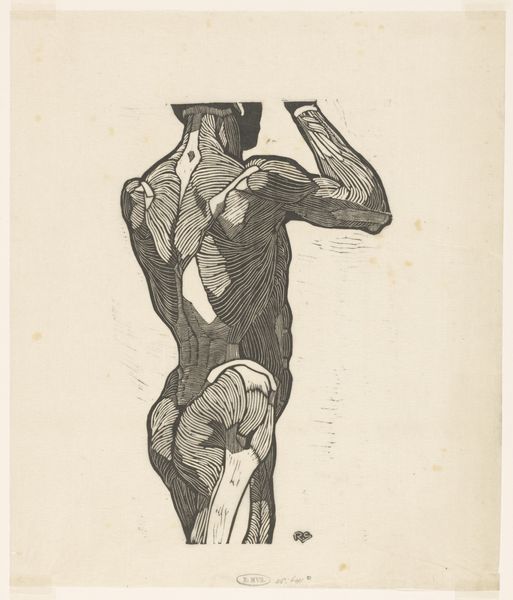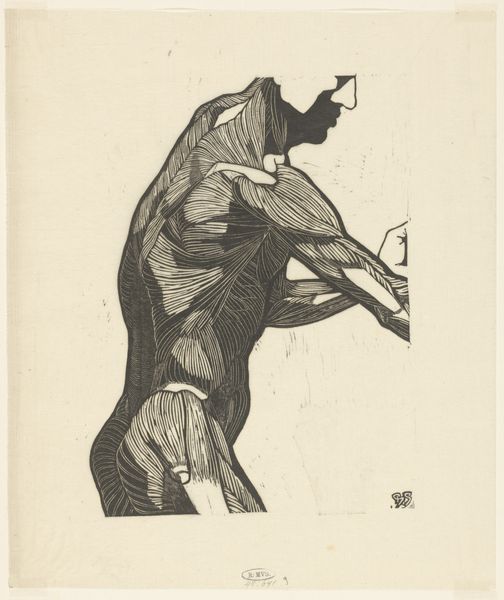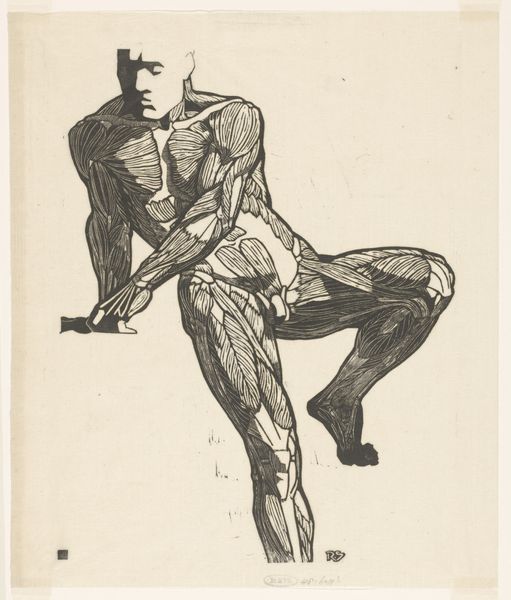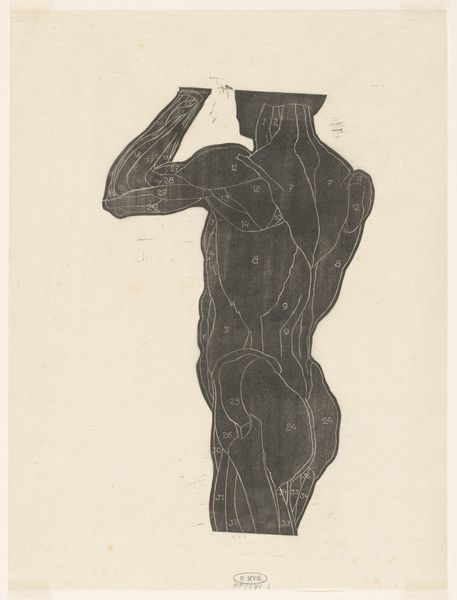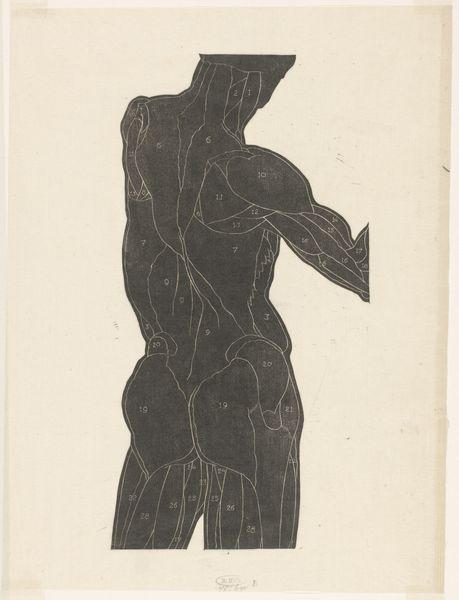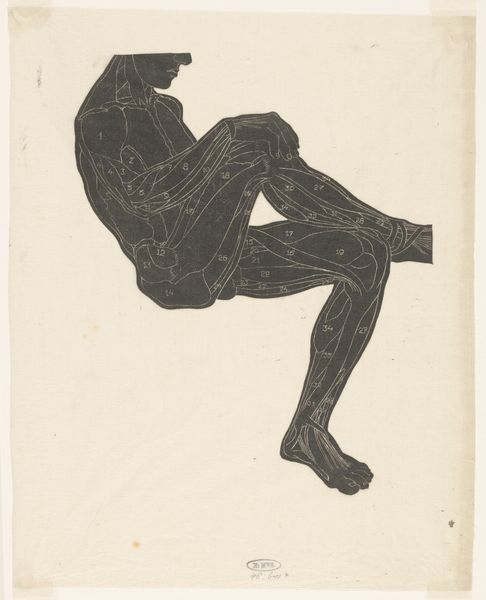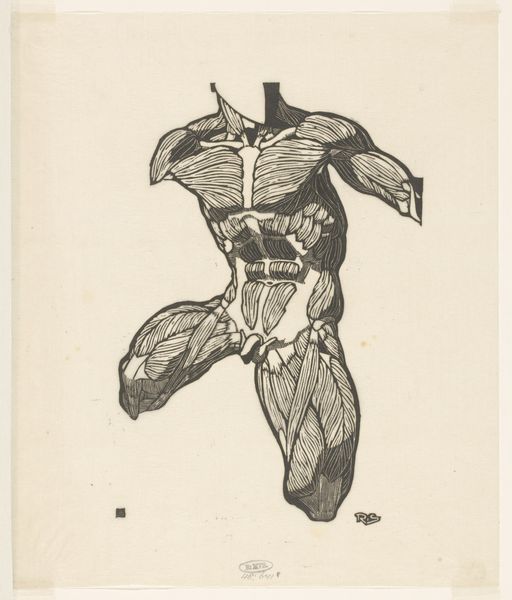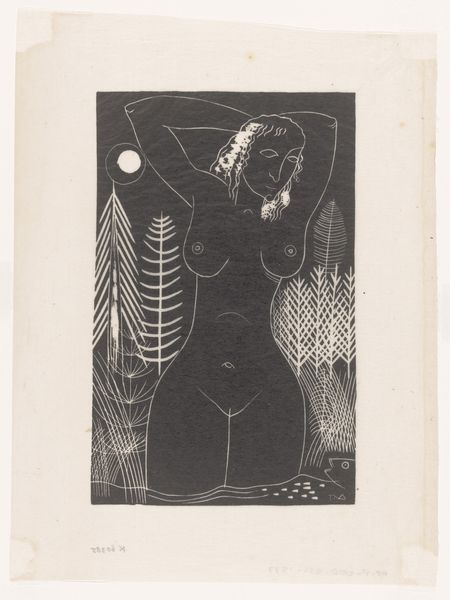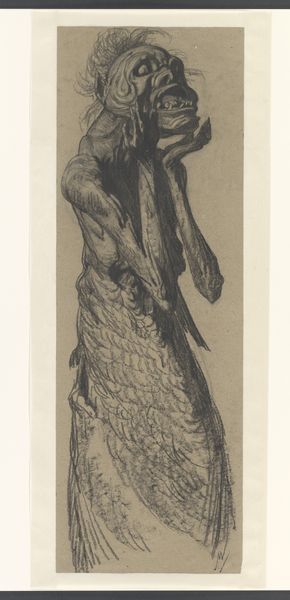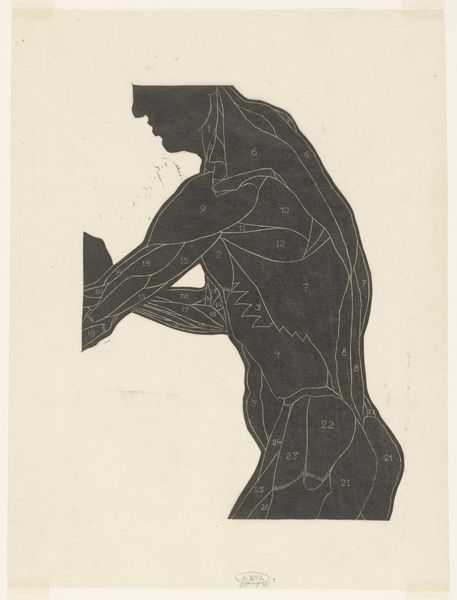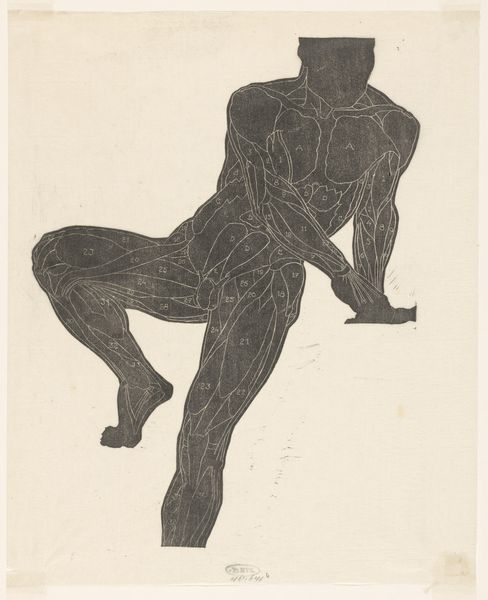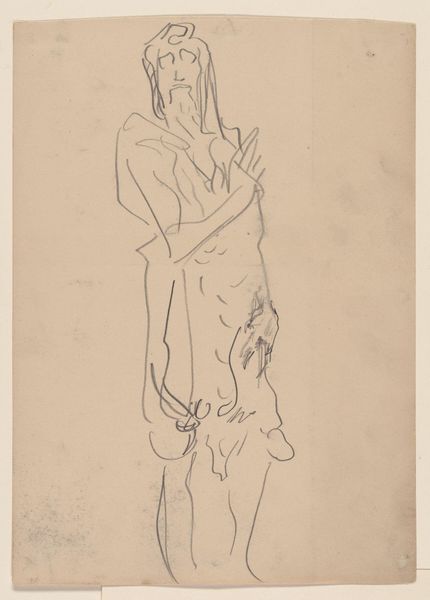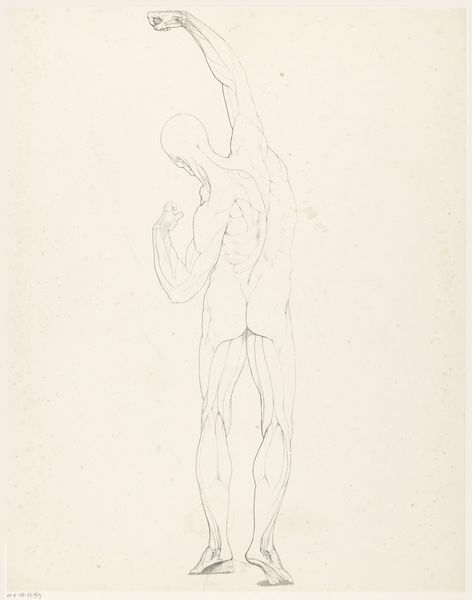
drawing, print, etching, ink
#
portrait
#
drawing
# print
#
etching
#
old engraving style
#
figuration
#
form
#
ink
#
pen-ink sketch
#
line
#
academic-art
#
nude
Dimensions: height 385 mm, width 263 mm
Copyright: Rijks Museum: Open Domain
Editor: So, here we have Reijer Stolk’s “Anatomische studie van de rug- en bilspieren van een man,” dating sometime between 1906 and 1945. It’s an etching, ink and print on paper. I am immediately struck by the stark contrast between the figure and the background and wonder about its emphasis on musculature. What catches your eye in this study? Curator: Well, immediately I recognize how this image accesses cultural memory – a connection to the long history of anatomical studies that begins in the Renaissance and extends to contemporary visualizations of the body. Each line speaks to a history of understanding the human form not just aesthetically but scientifically. Editor: Scientifically? Curator: Consider the symbolic weight of representing the body this way. It's not just a nude, it's a diagram. It's about uncovering, dissecting to comprehend inner workings. This almost recalls the tradition of *memento mori* reminding us of mortality. Editor: I see your point, it's like a celebration and a warning woven together through the detailed representation. The cultural meaning is definitely much richer than just accurate anatomy. Curator: Precisely! What we visually consume embeds itself within a wider framework. The image carries collective memory of scientific pursuit and the enduring fascination of what makes us human. Are we machines or something else entirely? That question still resounds today. Editor: This gives me a lot to consider in how anatomical drawings have deeper symbolic and cultural significance and invite questioning even today! Curator: Yes! Visual art is so powerful, not just for what we see, but for what we remember.
Comments
No comments
Be the first to comment and join the conversation on the ultimate creative platform.
